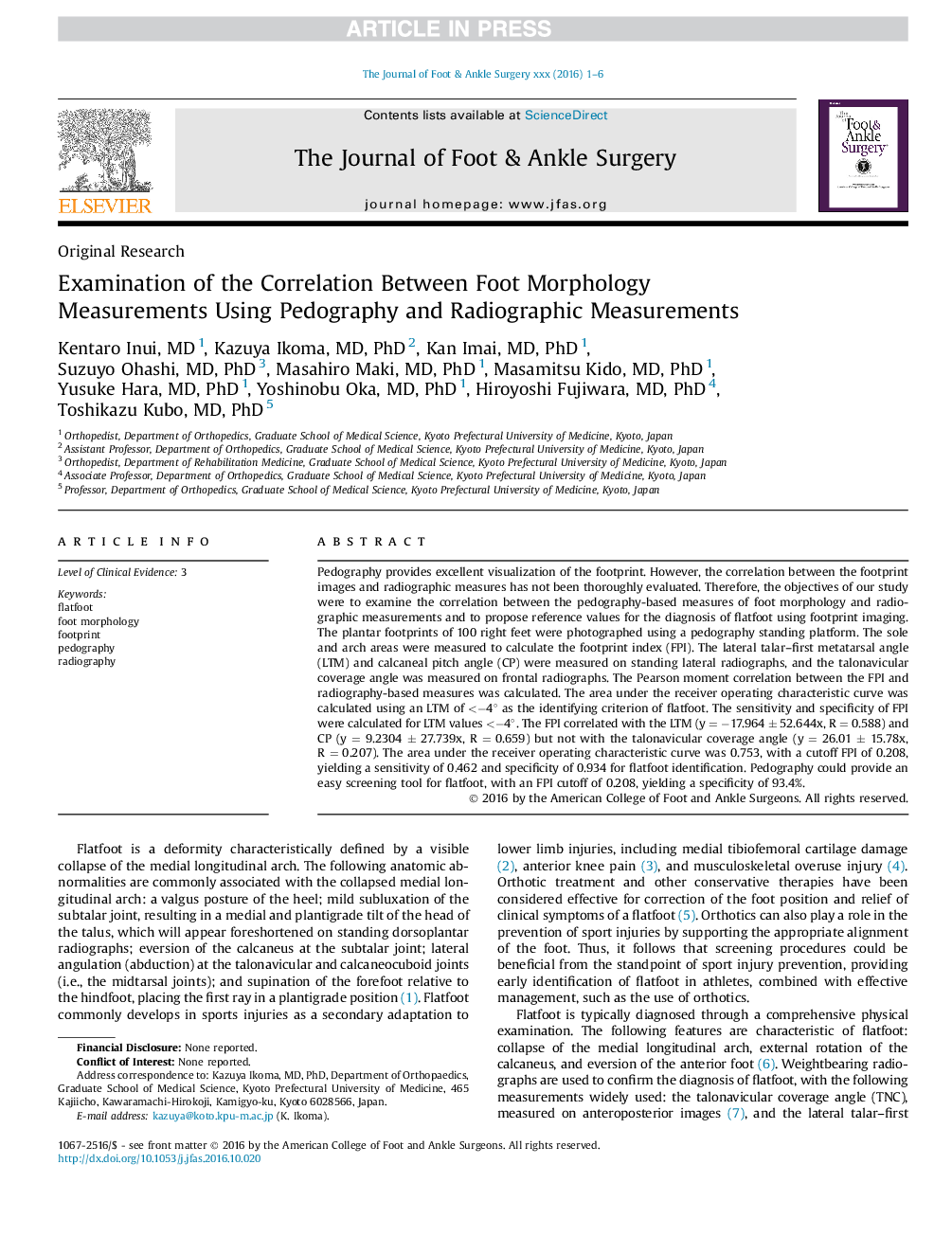| Article ID | Journal | Published Year | Pages | File Type |
|---|---|---|---|---|
| 5575979 | The Journal of Foot and Ankle Surgery | 2017 | 6 Pages |
Abstract
Pedography provides excellent visualization of the footprint. However, the correlation between the footprint images and radiographic measures has not been thoroughly evaluated. Therefore, the objectives of our study were to examine the correlation between the pedography-based measures of foot morphology and radiographic measurements and to propose reference values for the diagnosis of flatfoot using footprint imaging. The plantar footprints of 100 right feet were photographed using a pedography standing platform. The sole and arch areas were measured to calculate the footprint index (FPI). The lateral talar-first metatarsal angle (LTM) and calcaneal pitch angle (CP) were measured on standing lateral radiographs, and the talonavicular coverage angle was measured on frontal radiographs. The Pearson moment correlation between the FPI and radiography-based measures was calculated. The area under the receiver operating characteristic curve was calculated using an LTM of <â4° as the identifying criterion of flatfoot. The sensitivity and specificity of FPI were calculated for LTM values <â4°. The FPI correlated with the LTM (y = â17.964 ± 52.644x, R = 0.588) and CP (y = 9.2304 ± 27.739x, R = 0.659) but not with the talonavicular coverage angle (y = 26.01 ± 15.78x, R = 0.207). The area under the receiver operating characteristic curve was 0.753, with a cutoff FPI of 0.208, yielding a sensitivity of 0.462 and specificity of 0.934 for flatfoot identification. Pedography could provide an easy screening tool for flatfoot, with an FPI cutoff of 0.208, yielding a specificity of 93.4%.
Related Topics
Health Sciences
Medicine and Dentistry
Orthopedics, Sports Medicine and Rehabilitation
Authors
Kentaro MD, Kazuya MD, PhD, Kan MD, PhD, Suzuyo MD, PhD, Masahiro MD, PhD, Masamitsu MD, PhD, Yusuke MD, PhD, Yoshinobu MD, PhD, Hiroyoshi MD, PhD, Toshikazu MD, PhD,
